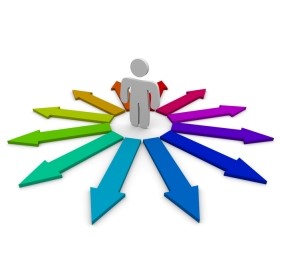All the talk in B2C and B2B these days is “omnichannel.” The B2C world has actually changed profoundly, and will continue to do so. We’re just seeing and starting to address the implications of omnichannel in the B2B world.
Manufacturers are starting to embrace the concept. New tools and analytics enable manufacturers to more effectively engage customers regardless of the channel they choose at the moment.
The tools enable us to have consistent conversations that build on each other as the customer engages us in different channels. If a customer engages us in a certain e-channel, moves to a call into a call center, then to a conversation with a field sales person, or attending an event at a channel partner, we have the potential of tracking that activity, analyzing it, and engaging the customer with the right content for the channel and where thy might be in the buying cycle.
It’s a fantastic ability to engage and manage the conversation–the analytics vendors will make boatloads of money as will consultants who help manufacturers implement these capabilities.
The rules our changing, where B2B customers primarily engaged through a single channel, they are now engaging through multiple channels.
Yet none of our go to market strategies–and none of the strategies of our channel partners account for this shift.
Channels are very familiar and a dominant go to market strategy in high technology and industrial products. Words like “two step distribution,” VAR, Reseller, Agent, Distributor, SI–Systems Integrators, inside sales, direct field sales, even e-Channels role off our tongues very easily.
Many very large B2B organizations drive the majority of their revenues through very rich networks of channel partners.
In the old days, there used to be a lot of talk about channel conflict–usually that was the conflict between a company’s own direct field sales people (or inside sales) with the channel. We even have conflict between partners within channels, but we create things like deal registration and other mechanisms to help deal with that conflict.
Over time, both channel partners and manufacturers have developed very rich capabilities to co-exist, create value and drive mutual business growth. Yes, there are still some conflict and contention issues, but usually these are outliers that can be managed in some way.
But all of this–both the strategies of the manufacturers and the business models of channel players have been built on the assumption the customer will stick, largely, to a single channel. They may look at alternatives from different VAR’s–even comparing the same product offering. They may evaluate proposals from different SI’s, they may even compare a VAR offering to an SI offering.
But largely both manufacturers and channel players have build strategies to manage these types of interactions with customers.
In the past, margin flow, or commission flow has largely been based on point of sales–that is, which partner got the PO. Yes, there are conflicts there–but usually managed on an exception basis. Manufacturers are even able to manage PO’s place electronically and directly on them–even though sold by a channel partner.
Manufacturers and channel partners are also dealing with shifts in business models about how channel players make money–is it off product margin, services, a combination, something else? There’s still a lot of development in this area, but the business models and “how we each make money” are pretty well understood.
So, while the business models and channel strategies of channel partners and manufacturers don’t handle every situation perfectly, the entire community knows how to manage the deal, revenue, margin/commission flow pretty well.
Again, this is all based on the assumption the majority of customers will leverage primarily one channel.
But what happens in an omnichannel world?
What happens when the customer does what they want to do? They may start their buying journey in one channel, jump to another, then another, and another, then place their order in yet another channel altogether?
Each player in that journey plays an important part in helping the customer in their buying journey. But as the customer moves from being primarily single channel focused in their buying journey to omnichannel, how does each player in that journey make money?
Channel players and manufacturers, alike, face huge disruption in their business models and will have to figure out how they make money in an omnichannel world? Channel players may contribute in the buying process, yet the PO and cashflow goes through an entirely different channel. So how do they make money in a world where they are part of the buying process but don’t get the PO?
Manufacturer’s have a lot to think about as well–in an omnichannel world, how do they build a channel ecosystem that enables the players to make money? What ecosystem do we build, how do we enable them, how do we support them, how do we maximize their ability to sell our products/services?
For manufacturers there’s a whole new consideration about “cost of selling.” In the traditional world, it’s pretty easy to understand and manage the cost of selling when customers deal primarily with one channel. But now as customers are creating their own buying journey and buying path, and as manufacturers support this, what does it do to cost of selling? How do we manage the cost of acquiring, growing, retaining customers in an omnichannel world?
Just as the B2C world is facing enormous disruption to fundamental business models—because of omnichannel, the B2B world will see huge disruption as well. Everything is up for grabs, new models and partner types will emerge, how we support the buyer–regardless of our role will change.
What are your thoughts? How do the business models of channel players need to change to make money in an omnichannel world? How do the go to market models of manufacturers change in this world? How do we continue to create value in this new customer journey–yet still make money and don’t add cost?

Leave a Reply